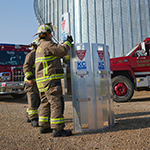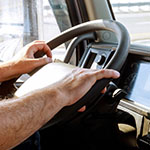Three reasons drivers get distracted behind the wheel
Talking to a passenger or adjusting the radio may seem insignificant, but these actions take attention away from the primary task of operating a vehicle. Any distractions, whether for a minute or just a few seconds, can endanger the lives of the driver, his or her passengers, other drivers and even bystanders.
There are three main types of driving distractions:
- Visual: Taking your eyes off the road ahead
- Physical: Taking one or more hands off the steering wheel to perform another task (e.g., reaching, eating, drinking, dialing a phone)
- Cognitive: Taking your mind off the task of driving
Most people understand that taking their eyes off the road can lead to a crash, but many underestimate the danger of cognitive distraction. These mental activities, while many just think of as multi-tasking, can cause inattention blindness diverting focus from the road and impairing our ability to react promptly to hazards.
Some examples of common distractions
- Texting or talking on a cell phone
- Eating and drinking
- Conversations with passengers
- Grooming
- Reading, including maps
- Using an electronic navigation system
- Adjusting an entertainment console or device
Steps you can take to help promote driving safety
In an ideal world, you would eliminate distractions that divert drivers’ attention from the road. Since that is not practical, consider these tips for your business:
- Include guidance on avoiding distracted driving in your company’s driver’s handbook.
- Ask employees to sign a pledge form, committing to safe and courteous driving.
- Remind managers and supervisors not to call employees when they are driving.
- Monitor individual operators’ performance using telematics, How’s My Driving? programs, or in-cabin cameras.
- Use devices or apps that lock down phones and tablets while in motion (some cellular providers offer free apps for automated responses).
- Encourage drivers to find a safe spot away from traffic if they need to make a call.
- Take appropriate actions to address drivers who violate safe driving policies.
- Educate drivers on lifestyle adjustments, including proper nutrition, sleep environment, fitness, weight management, and avoiding excessive caffeine, nicotine, and alcohol.
References
1. Driver Electronic Device Users in 2022, National Highway Traffic Safety Administration. 2022. https://crashstats.nhtsa.dot.gov/Api/Public/ViewPublication/813531#:~:text=The%20percentages%20of%20drivers%20holding,typical%20daylight%20moment%20in%202022.

 >
>

 >
>
 >
>